Global analysis of HLA-A2 restricted MAGE-A3 tumor antigen epitopes and corresponding TCRs in non-small cell lung cancer
- PMID: 37649599
- PMCID: PMC10465222
- DOI: 10.7150/thno.84710
Global analysis of HLA-A2 restricted MAGE-A3 tumor antigen epitopes and corresponding TCRs in non-small cell lung cancer
Abstract
Background: Advanced non-small cell lung cancer (NSCLC) is the most common type of lung cancer with poor prognosis. Adoptive cell therapy using engineered T-cell receptors (TCRs) targeting cancer-testis antigens, such as Melanoma-associated antigen 3 (MAGE-A3), is a potential approach for the treatment of NSCLC. However, systematic analysis of T cell immune responses to MAGE-A3 antigen and corresponding antigen-specific TCR is still lacking. Methods: In this study, we comprehensively screened HLA-A2 restricted MAGE-A3 tumor epitopes and characterized the corresponding TCRs using in vitro artificial antigen presentation cells (APC) system, single-cell transcriptome and TCR V(D)J sequencing, and machine-learning. Furthermore, the tumor-reactive TCRs with killing potency was screened and verified. Results: We identified the HLA-A2 restricted T cell epitopes from MAGE-A3 that could effectively induce the activation and cytotoxicity of CD8+ T cells using artificial APC in vitro. A cohort of HLA-A2+ NSCLC donors demonstrated that the number of epitope specific CD8+ T cells increased in NSCLC than healthy controls when measured with tetramer derived from the candidate MAGE-A3 epitopes, especially epitope Mp4 (MAGE-A3: 160-169, LVFGIELMEV). Statistical and machine-learning based analyses demonstrated that the MAGE-A3-Mp4 epitope-specific CD8+ T cell clones were mostly in effector and proliferating state. Importantly, T cells artificially expressing the MAGE-A3-Mp4 specific TCRs exhibited strong MAGE-A3+ tumor cell recognition and killing effect. Cross-reactivity risk analysis of the candidates TCRs showed high binding stability to MAGE-A3-Mp4 epitope and low risk of cross-reaction. Conclusions: This work identified candidate TCRs potentially suitable for TCR-T design targeting HLA-A2 restricted MAGE-A3 tumor antigen.
Keywords: Cancer immunotherapy; Epitope-specific TCR; MAGE-A3; NSCLC.
© The author(s).
Conflict of interest statement
Competing Interests: Patent applications have been filed on aspects of the described candidate TCR sequences for TCR-T design by O.J.L., B.Z., Z.R., G.C., L.G. and H.Z. The other authors declare no competing interests.
Figures

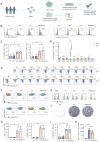
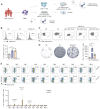
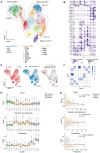
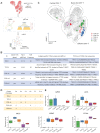
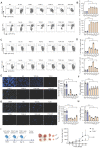


Similar articles
-
A TCR targeting the HLA-A*0201-restricted epitope of MAGE-A3 recognizes multiple epitopes of the MAGE-A antigen superfamily in several types of cancer.J Immunol. 2011 Jan 15;186(2):685-96. doi: 10.4049/jimmunol.1001775. Epub 2010 Dec 13. J Immunol. 2011. PMID: 21149604 Free PMC article.
-
TCR gene transfer: MAGE-C2/HLA-A2 and MAGE-A3/HLA-DP4 epitopes as melanoma-specific immune targets.Clin Dev Immunol. 2012;2012:586314. doi: 10.1155/2012/586314. Epub 2012 Feb 12. Clin Dev Immunol. 2012. PMID: 22400038 Free PMC article.
-
Development of a CD8 co-receptor independent T-cell receptor specific for tumor-associated antigen MAGE-A4 for next generation T-cell-based immunotherapy.J Immunother Cancer. 2021 Mar;9(3):e002035. doi: 10.1136/jitc-2020-002035. J Immunother Cancer. 2021. PMID: 33771892 Free PMC article.
-
Melanoma-associated antigen A4: A cancer/testis antigen as a target for adoptive T-cell receptor T-cell therapy.Cancer Treat Rev. 2025 Mar;134:102891. doi: 10.1016/j.ctrv.2025.102891. Epub 2025 Jan 26. Cancer Treat Rev. 2025. PMID: 39970827 Review.
-
T cell receptor therapeutics: immunological targeting of the intracellular cancer proteome.Nat Rev Drug Discov. 2023 Dec;22(12):996-1017. doi: 10.1038/s41573-023-00809-z. Epub 2023 Oct 27. Nat Rev Drug Discov. 2023. PMID: 37891435 Free PMC article. Review.
Cited by
-
An Immunohistochemical Study of MAGE Proteins in Hepatocellular Carcinoma.Diagnostics (Basel). 2024 Aug 5;14(15):1692. doi: 10.3390/diagnostics14151692. Diagnostics (Basel). 2024. PMID: 39125568 Free PMC article.
-
Immunotherapy and liver transplantation for hepatocellular carcinoma: Current and future challenges.World J Transplant. 2025 Jun 18;15(2):98509. doi: 10.5500/wjt.v15.i2.98509. World J Transplant. 2025. PMID: 40535484 Free PMC article. Review.
-
Recent clinical researches and technological development in TIL therapy.Cancer Immunol Immunother. 2024 Sep 12;73(11):232. doi: 10.1007/s00262-024-03793-4. Cancer Immunol Immunother. 2024. PMID: 39264449 Free PMC article. Review.
-
Revolutionizing cancer treatment: the emerging potential and potential challenges of in vivo self-processed CAR cell therapy.Theranostics. 2024 Oct 28;14(19):7424-7447. doi: 10.7150/thno.101941. eCollection 2024. Theranostics. 2024. PMID: 39659573 Free PMC article. Review.
-
Extracellular Vesicles as Precision Delivery Systems for Biopharmaceuticals: Innovations, Challenges, and Therapeutic Potential.Pharmaceutics. 2025 May 12;17(5):641. doi: 10.3390/pharmaceutics17050641. Pharmaceutics. 2025. PMID: 40430932 Free PMC article. Review.
References
-
- Sung H, Ferlay J, Siegel RL, Laversanne M, Soerjomataram I, Jemal A. et al. Global Cancer Statistics 2020: GLOBOCAN Estimates of Incidence and Mortality Worldwide for 36 Cancers in 185 Countries. CA Cancer J Clin. 2021;71:209–49. - PubMed
-
- Thai AA, Solomon BJ, Sequist LV, Gainor JF, Heist RS. Lung cancer. Lancet. 2021;398:535–54. - PubMed
-
- Planchard D, Popat S, Kerr K, Novello S, Smit EF, Faivre-Finn C. et al. Metastatic non-small cell lung cancer: ESMO Clinical Practice Guidelines for diagnosis, treatment and follow-up. Ann Oncol. 2018;29:iv192–iv237. - PubMed
-
- Jhunjhunwala S, Hammer C, Delamarre L. Antigen presentation in cancer: insights into tumour immunogenicity and immune evasion. Nat Rev Cancer. 2021;21:298–312. - PubMed
Publication types
MeSH terms
Substances
LinkOut - more resources
Full Text Sources
Other Literature Sources
Medical
Molecular Biology Databases
Research Materials

